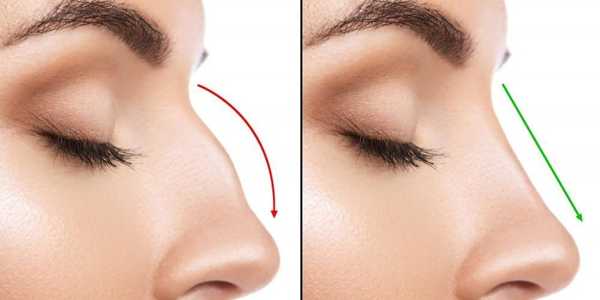The Rising Popularity of Rhinoplasty
Rhinoplasty, often called a nose job, has become increasingly popular as societal attitudes towards cosmetic surgery shift towards greater acceptance. As interest in this transformative procedure escalates, it is essential for those contemplating this journey to understand its costs, benefits, and financing options.
Understanding Rhinoplasty

Rhinoplasty encompasses surgical interventions to reshape the nose for aesthetic improvements or functional restoration. From a cosmetic perspective, the goal is to improve the nose's appearance, achieving better symmetry and proportion of the face's other features. Many individuals pursue this surgery to address specific concerns, such as a pronounced hump or an overly broad nasal tip, outcomes that often lead to increased confidence and personal satisfaction.
On the functional side, rhinoplasty can also remedy structural nasal issues, such as a deviated septum, often through septoplasty. Addressing these problems can relieve breathing difficulties and chronic sinus issues, suggesting that rhinoplasty frequently provides cosmetic enhancements and functional relief.
Moreover, many patients report significant emotional benefits post-procedure. The empowerment and elevation in self-esteem they experience can enhance their social and professional interactions. Thus, rhinoplasty represents not just a physical change but a profound step toward overall emotional well-being, making it a formidable option for anyone looking to modify their nose.
The Cost Breakdown
Average Cost of Nose Jobs
The average cost of a rhinoplasty can vary considerably due to several influencing factors, such as the clinic's geographic location, the complexity of the surgery, and the surgeon's expertise. According to recent statistics from the American Society of Plastic Surgeons, the national average for rhinoplasty hovers around $5,350. However, costs can vary drastically, especially in urban centers that exceed $10,000, while smaller towns might offer prices starting at $3,000.
These regional price differences are largely dictated by local demand and varying living costs. For example, patients in major metropolitan areas like New York and Los Angeles can expect to pay more than those in midwestern or southern states. Furthermore, individual clinics establish their rates based on numerous variables, including facility expenses, anesthesia, and post-operative care.
Potential patients must also be vigilant about possible hidden fees that may emerge, such as consultation and additional follow-up visit fees. Importantly, many clinics offer financing options to help patients manage their overall expenses through affordable monthly payment plans. Understanding these financial components is crucial for prospective rhinoplasty patients, allowing them to assess the costs of their expected benefits and outcomes.
Factors Influencing Cost
Multiple factors heavily influence the overall cost of rhinoplasty, necessitating that prospective patients understand each component thoroughly. A primary consideration is the surgeon's level of experience. Board-certified plastic surgeons renowned for their expertise often charge higher fees due to their proven track record in achieving successful outcomes. The worth of their training can provide significant reassurance regarding the procedure's safety and effectiveness.
Complexity is another crucial cost-determining factor. Basic nose straightening typically costs less than more complex reconstructive procedures, which might entail addressing substantial reshaping or structural issues. Thus, potential patients should openly discuss their specific needs during pre-surgical consultations to receive accurate pricing estimates.

Geographic location also plays a critical role in pricing disparities. Urban areas with higher living costs can increase fees compared to rural regions. Additionally, facility or hospital fees are a substantial portion of the total cost, with varying charges based on equipment quality, staffing, and patient care standards.
Do not underestimate the financial implications of pre-operative assessments and post-operative care, as these elements can accumulate significantly. Pre-operative evaluations are essential for preparing patients before surgery, while post-operative care usually entails multiple follow-ups and potential medications, further contributing to the overall financial commitment. A robust understanding of these factors allows patients to make well-informed decisions about their rhinoplasty.
Hidden Costs
When embarking on a rhinoplasty journey, patients must remain vigilant about the hidden costs that can inflate the final procedure expense. Besides the surgeon's fee, charges for anesthesia can significantly increase overall expenditures. Additionally, prescriptions for post-operative patients and medications related to pain management must be factored into the budget. Before the surgical procedure, diagnostic imaging tests such as X-rays or CT scans can also be necessary expenses, potentially adding to the financial burden.
Reviewing the surgeon's complete cost estimate is essential for transparency about expenses. Understanding each pricing aspect is critical to avoid unexpected costs that complicate the surgical experience. By proactively analyzing and comprehending these hidden fees, prospective patients can better equip themselves financially and solidify their investments in their aesthetic and health aspirations.
Financing Options
In contemplating rhinoplasty, it is vital to explore available financing options to make this procedure financially manageable. Numerous clinics offer payment strategies that allow patients to divide the overall expense into feasible monthly payments, reducing financial pressure. Interest-free financing options are also accessible through several healthcare credit cards designed specifically for cosmetic surgery.
Additionally, some providers collaborate with third-party financing organizations, which offer flexible payment terms tailored to accommodate various budgets. Patients can pursue rhinoplasty by presenting multiple financing avenues without facing overwhelming upfront costs. Understanding these financial alternatives empowers potential clients, making the life-changing procedure a realistic opportunity instead of a distant ambition. By assessing financial planning closely, individuals can cultivate a more self-assured self-image.
Insurance and Coverage
Navigating insurance coverage for rhinoplasty can be intricate, primarily depending on the surgery's intent. Insurance may cover rhinoplasty costs when deemed medically necessary, such as corrective surgery for a deviated septum or post-injury repairs. Conversely, purely cosmetic rhinoplasty, aimed solely at enhancing appearance, is typically excluded from coverage.
To adeptly manage insurance inquiries, patients should:
1. Engage with their surgeon to gather documentation asserting the medical necessity of the surgery.
2. Contact their insurance provider for clarity regarding coverage options, required documents, and potential out-of-pocket expenses.
3. Seek pre-authorization, if applicable, to ensure acceptance of the medical necessity.
4. Keep detailed records of discussions and documents for future reference.
By being proactive and educated, patients can enhance their chances of obtaining coverage for their rhinoplasty.
Take the Next Step Towards Transformation
Understanding the financial implications of rhinoplasty is crucial for anyone considering this transformative procedure. As costs can range widely based on numerous elements, potential patients should prioritize thorough research and engage with multiple surgeons to secure realistic quotes. This process not only aids in budgeting but also promotes the selection of a qualified professional who meets both aesthetic desires and financial constraints. By approaching this decision with diligence and care, you can experience enhanced confidence and aesthetics.



















